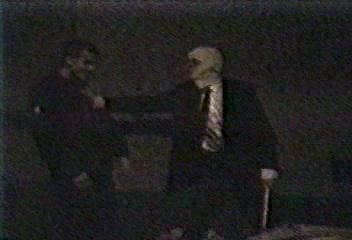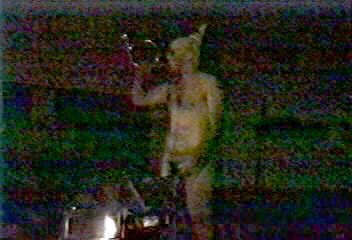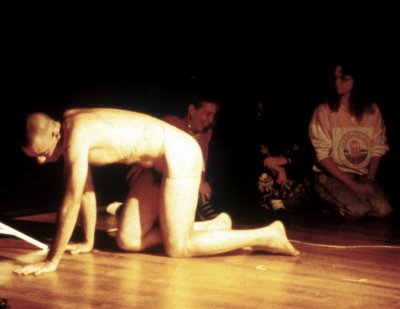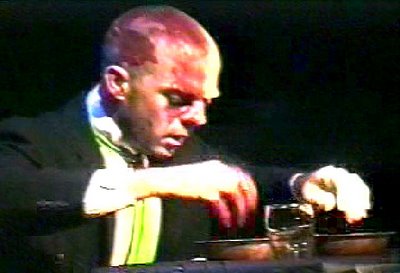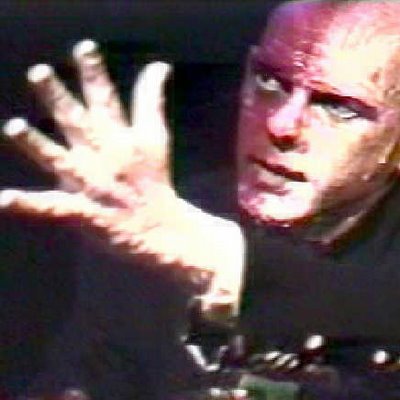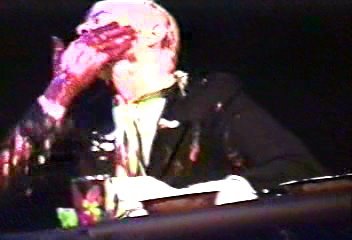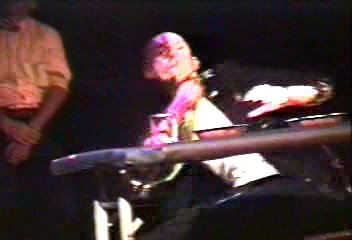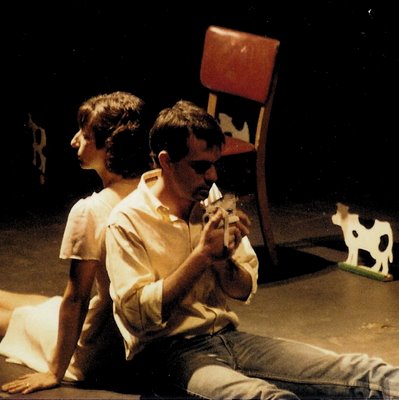My second attempt at making a new style of performance wasn't very successful. I'd won a commissioning competition given by Intersection for the Arts as part of their Off-Site Spaces program. I'd proposed a 16-hour performance installation for their intended site: Justin Herman Plaza, at the foot of Market Street between the Ferry Building & the Hyatt. Intersection gave me $1000 & I ended up spending $1300 on supplies & other production costs. I spent a long time negotiating with SF Park & Rec, who had most of the jurisdiction over this "public" space. The Hyatt also had some jurisdiction. I was told I couldn't use open flames, smoke, or a tent - because they didn't allow the homeless to use them. No amount of negotiation could make them understand the difference between theatrical representations of shelter & actual shelter. I often think they were right on this score.
The plaza contains a statue of Juan Bautista de Anza, who in 1776 led an expedition from Tucson to, eventually, the San Francisco peninsula, where he laid out the future sites of both the San Francisco Presidio and Mission Dolores. I proposed to make a piece that referred to issues of space, colonization & commemoration. My "character" was, to my way of thinking, the body of de Anza and the hallucinating imagination of Carlos III, the reigning monarch of Spain. Cool idea but in practice - whatever.
I began the performance by circumnavigating the 2+ acre plaza for an hour or so, then spent about the same amount of time marking out that boundary with painter's masking tape: blue for the ocean (& passage into performativemode) I was "crossing," easily removable afterwards, and referring also to my usual occupation as a housepainter.

After ceremonially "claiming" my territory, I began to explore & shape it by laying out small installations of "raw" materials: cardboard packing squares, newspapers tied in bundles, bricks, bunches of fennel stalks, dirt, potatoes painted gold. I also built the structure that Park & Rec would allow: a three-sided tent with no roof. After setting out all these materials, I physically explored the plaza by walking for an hour semi-randonly within the border I'd taped out.

I think I took a short rest after that, though still in a performative mode, then started in on several hours of interaction with the materials I'd set out. I would tie them up, move them by carrying or dragging, untie them, move them, bundle them, move them, over & over.
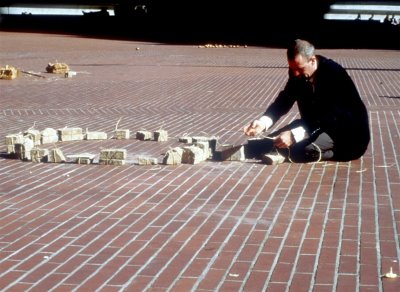
Eventually as the afternoon wore down, I acted out a kind of bogus shamanic scenario with a woman whose name I am so so sorry I have hopefully only temporarily forgotten. She was dressed in twigs & stalks & burlap & I suppose she was meant to have represented some sort of indigenous anima who was to both precipitate & heal the schizophrenic breaking of my Western psyche. Mea culpa, mea culpa, mea culpa. At least the images of me dressed like a bird with fennel-stalk wings & my subsequent
crise de kultur look kind of cool.

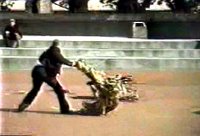
After this nonsense, I collected myself again & collected all the materials I'd been working with, dragged them to the concrete bandstand at one end of the plaza, built a sort of "stage" with these materials. I disappeared for awhile, then an art audience showed up as the sun went down, mostly friends, about 20 people max. I reappeared as a court jester in tights & a little hood with bells etc., led the audience around the site, up through Vaillancourt Fountain, then to the bandstand, on the outside of which Raegan Kelly projected three or four B&W super-8 films I'd commissioned her to make for this performance. We were both pretty heavy into Abigail Child at the time. After the films were over, everyone followed me into the bandstand & sat around me as I started the culminating, climactic "theatrical" portion of the piece.

A portion which I had planned on figuring out during the 14 hours that preceded it - but I hadn't. Now, 14 hours outdoors in February doing all this stuff is a tougher go than I'd thought, and I was pretty beat by then - too beat to improvise anything sensible, too beat to care. So after a few embarrassing minutes I put on a blindfold, picked up a gold-painted golf club, a 9-iron I think, and started swinging wildly, chasing everyone out & shouting "go home!" After awhile it worked. End of story except for apologies to everyone who had to be there. Too much "story" not enough presence. I think all these pictures were taken by Raegan Kelly, including the two fennel-bird-freakout ones, which were shoot off a playback of video shot by Todd Edelman.

